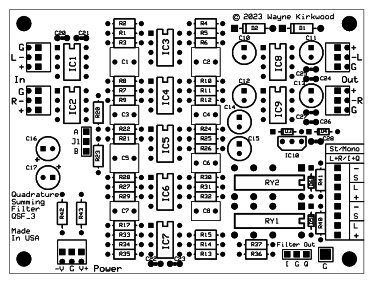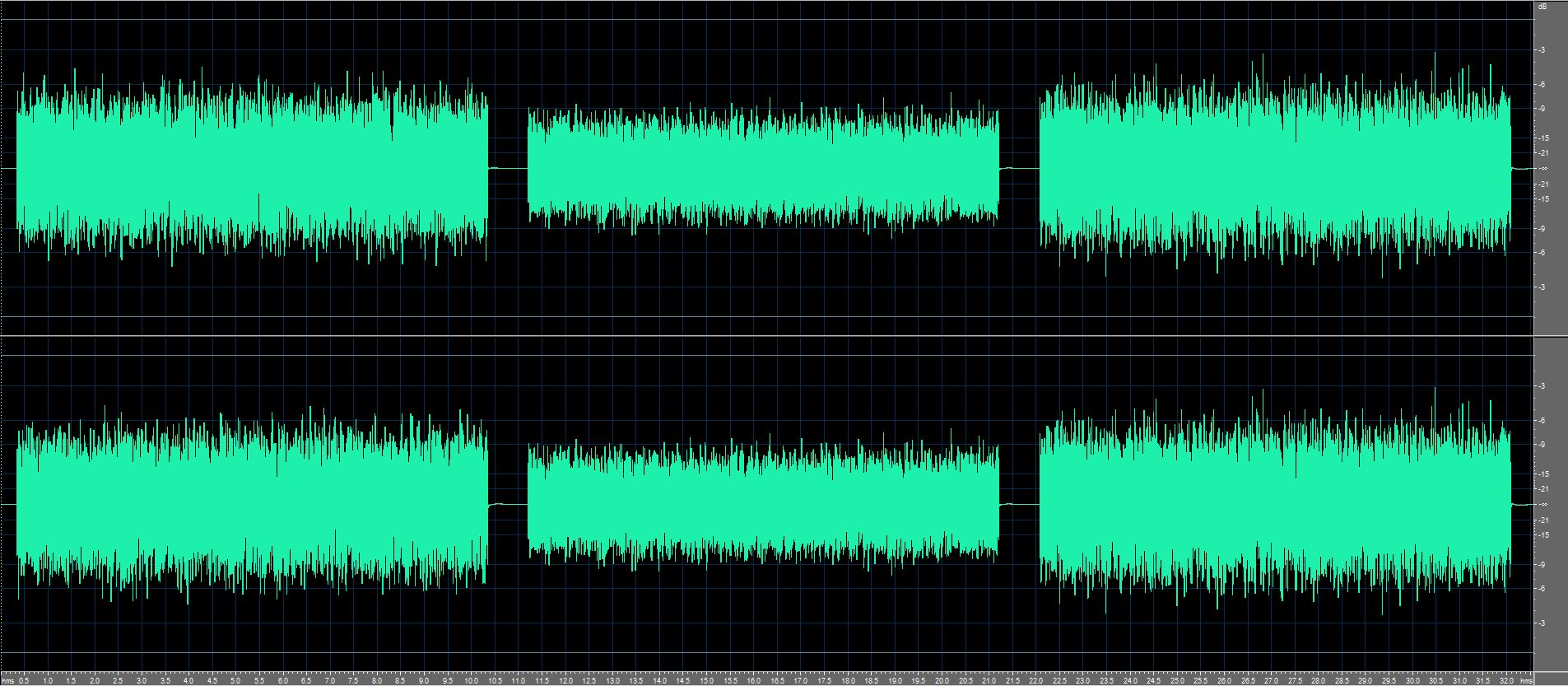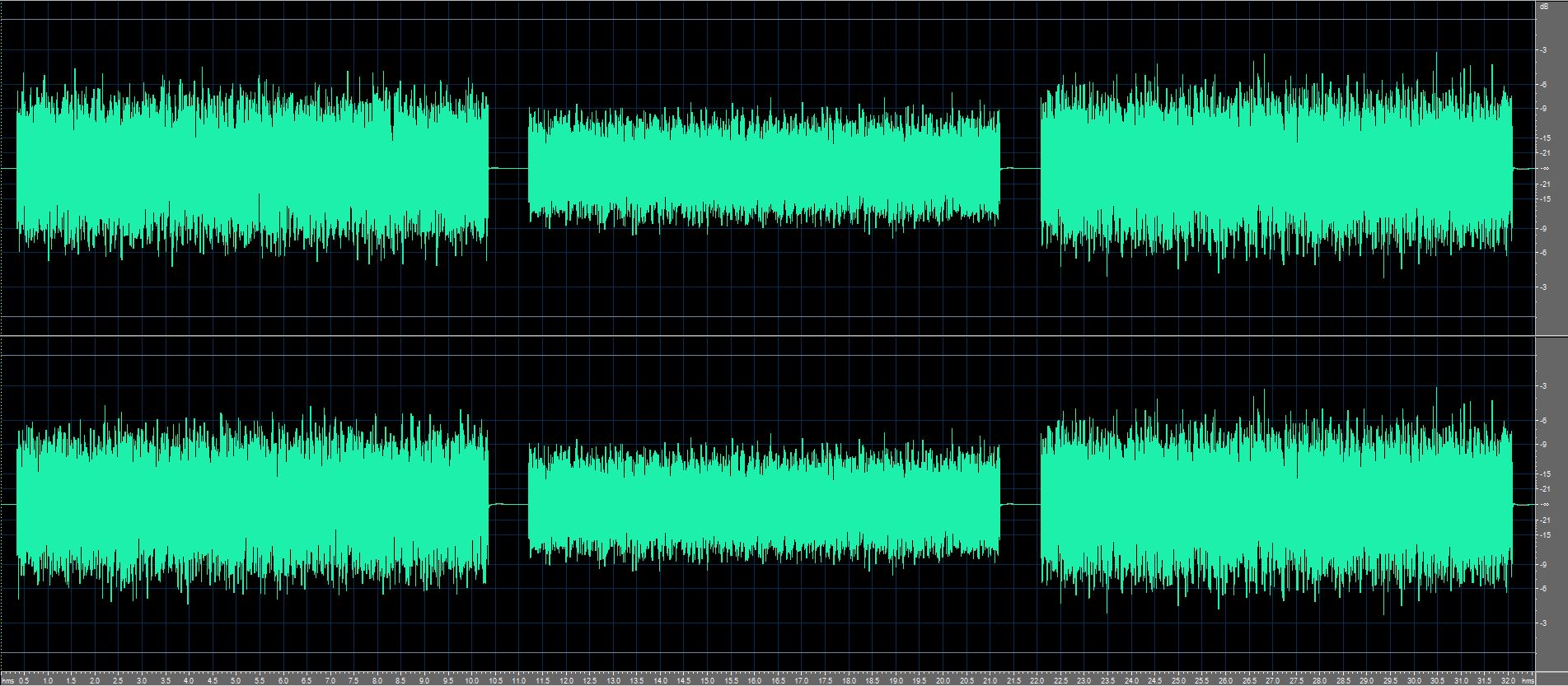This is not teh 90° shifter. It's a single channel APF; I can't read the values but I surmise it's the analog delay similar to the one in the EMT 266.Mr. Kahn Symmetra-Peak device
You are using an out of date browser. It may not display this or other websites correctly.
You should upgrade or use an alternative browser.
You should upgrade or use an alternative browser.
Studer 1 194 533. 90 degree shifter. LTspice file
- Thread starter Martin Griffith
- Start date
Help Support GroupDIY Audio Forum:
This site may earn a commission from merchant affiliate
links, including eBay, Amazon, and others.
starting to understard the usage of 90 deg shift for envelope extraction...
i misunderstood everything specially how to use it... even now still confused but enthusiastic to experiment
it s very complex for my basic knowledge but will try again to implement in a simulation for a dynProcessor
but will try again to implement in a simulation for a dynProcessor
... a long way for a newbie, ahahahah
best
i misunderstood everything specially how to use it... even now still confused but enthusiastic to experiment
it s very complex for my basic knowledge
... a long way for a newbie, ahahahah
best
Attachments
starting to understard the usage of 90 deg shift for envelope extraction...

This is what I was referring to in post #21, except they're usin log conversion first to do the squaring. It doesn't tell the whole story, though. When one of the outputs is zero, log is minus infinity, so the sum is still minus infinity. Summing the logs via PN junctions (diodes ot transdiodes) probably answers that.
No. The 118 sums the two channels into the rms detector, whilst the 128 uses two separate detectors.Is this something in dbx118 or 128?
I've done a "Quadrature Summing Filter Board" based on the Studer/Dome 90° Filter and am waiting for them to arrive.
I ran some sound files through the Protoboard and have decided to share them cross-posted from my site.
Here's an image of the board layout.

I ran some sound files through the Protoboard and have decided to share them cross-posted from my site.
Here's an image of the board layout.

While I'm waiting on Quadrature Summing Filter boards to be delivered I fired up the Protoboard to make some sample files.
Some time ago I downloaded a problematic synth sample from Gearspace that was posted in this thread: https://gearspace.com/board/so-much...disappear-mono-need-help-troubleshooting.html
I hadn't had the opportunity to process that file until now.
The first section is the uber-wide original version which on the vectorscope looks like a big round ball of steel wool.
The second section is conventional (L+R)/2 mono.
The third is I+Q/1.4 mono.
For identical in-polarity inputs the gain is structured so that (L+R)/2 is unity gain and (I+Q)/1.4 is also unity gain.
When the inputs are out-of-polarity the conventional mono output has no output.
The (I+Q)/1.4 output - when the inputs are out-of-polarity is also at unity gain.
Thus on the "I+Q" output in-polarity and out-of-polarity fold down to mono with equal weight.
The first section is the uber-wide original version which on the vectorscope looks like a big round ball of steel wool.
The second section is conventional (L+R)/2 mono.
The third is (I+Q)/1.4 mono.
Quadrature Summing Filter Synth Demo wav file: https://proaudiodesignforum.com/content/Quadrature_Summing_Filter_Synth_Demo.wav

Quadrature Summing Filter Synth Demo
I also tried a fully-uncorrelated noise file: https://proaudiodesignforum.com/content/Quadrature_Summing_Filter_Noise_Demo.wav
The first section is stereo noise.
The second section is conventional (L+R)/2 mono.
The third is (I+Q)/1.4 mono.

Quadrature Summing Filter Uncorrelated Noise Demo
Somehow, as if by "magic" - but actually predictable - the RMS power of the I+Q sum is 3 dB greater than L+R.
The powers of the "stereo" and I+Q segments are statistically identical.
What I'm really interested in is how sounds a mono file with separate I and Q channels. Could it make a decent stereo simulator?
Not without some kind of help.What I'm really interested in is how sounds a mono file with separate I and Q channels. Could it make a decent stereo simulator?
The 90° lagging channel gets Haas-panned off to one side and statically sits there in a far away corner.
The matrix panner using a filter in Side is far better at simulation.
There is a modest few degrees amount of widening of this mono source. Matrix Panner Demo
I also recall you asking if I+Q prevents sum-difference phaser/flanger effects from disappearing in mono and it does fix that.
I did bring the I and Q outputs to pins so people could experiment with a 1 in I+Q out configuration for quadrature rectification.
For a mono dynamics sidechain this gives a better estimate of overall signal power than L+R. I realize it doesn't compute power but it yields RMS levels closest to stereo.
As I think about it you may be on to something.
I have an experiment to run for you to make it stereo simulate.
Paint a mental picture of a two section linear taper pot with the elements straddling the I and Q outputs.
The pot is wired contra-rotating so that as one section pans from I to Q the other section pans from Q to I.
The I and Q inputs are in parallel and fed from a mono source for 1 in 2 out.
I leads Q; Q lags I.
The L and R outputs get taken from the wipers.
The center of rotation is mono I+Q.
When the pot is panned fully CCW I is forwarded to L and Q to R. The panned element will be Haas-panned left (arriving soonest) with phase differential width between L and R.
When panned fully CCW the I channel is now forwarded to R and the image becomes R heavy by virtue of arriving soonest.
It's worth trying.
I have an experiment to run for you to make it stereo simulate.
Paint a mental picture of a two section linear taper pot with the elements straddling the I and Q outputs.
The pot is wired contra-rotating so that as one section pans from I to Q the other section pans from Q to I.
The I and Q inputs are in parallel and fed from a mono source for 1 in 2 out.
I leads Q; Q lags I.
The L and R outputs get taken from the wipers.
The center of rotation is mono I+Q.
When the pot is panned fully CCW I is forwarded to L and Q to R. The panned element will be Haas-panned left (arriving soonest) with phase differential width between L and R.
When panned fully CCW the I channel is now forwarded to R and the image becomes R heavy by virtue of arriving soonest.
It's worth trying.
I experimented years ago a similar system, with only one APF. It gave much better practical results than conventional pan-pots. P&nning hard would still leave LF content on both sides for punch, but HF did the steering.As I think about it you may be on to something.
I have an experiment to run for you to make it stereo simulate.
Paint a mental picture of a two section linear taper pot with the elements straddling the I and Q outputs.
The pot is wired contra-rotating so that as one section pans from I to Q the other section pans from Q to I.
The I and Q inputs are in parallel and fed from a mono source for 1 in 2 out.
I leads Q; Q lags I.
The L and R outputs get taken from the wipers.
The center of rotation is mono I+Q.
When the pot is panned fully CCW I is forwarded to L and Q to R. The panned element will be Haas-panned left (arriving soonest) with phase differential width between L and R.
When panned fully CCW the I channel is now forwarded to R and the image becomes R heavy by virtue of arriving soonest.
It's worth trying.
I submitted it to Soundcraft.
They were vaguely interested, toyed with it, but did not consider putting it in their mixers, simply because no one asked for it!
That was my intent with the Matrix Panner.Panning hard would still leave LF content on both sides for punch, but HF did the steering.
I can't properly accredit the ME who said this: "Stereo bass is interesting mono bass is powerful."
I'm seriously thinking about approaching Nautel to suggest they consider implementing this in their DSP-based AM exciters. Most modern AM airchains are stereo all the way to the AES-3 input to the transmitter. The program may be dual-mono upstream but the studio and STL are stereo.
The benefit of I+Q summing is an increase in RMS signal power of 0 to +3 dB (depending on correlation) and a decrease in crest factor without using any compression. Then of course there's the fact that AM is dead so this may be like giving meds to the dead.
According to the audio files "Shape of things to come", it is clear that the I+Q is louder than the A+B, but isn't it simply the result of the 1.4 coefficient.The benefit of I+Q summing is an increase in RMS signal power of 0 to +3 dB (depending on correlation) and a decrease in crest factor without using any compression.
For a start, the original 2-ch doesn't qualify as stereo, since there is no correlation between channels.
In this particular case, I don't think either summing options has significant advantage.
I would think the main advantage of I+Q would be in the presence of significant out-of-phase components, where they would be put in the same quadrant by the 90° shifter, instead of being simply cancelling.
It could be the difference in coefficient in that hard-L/R-panned song.According to the audio files "Shape of things to come", it is clear that the I+Q is louder than the A+B, but isn't it simply the result of the 1.4 coefficient.
For a start, the original 2-ch doesn't qualify as stereo, since there is no correlation between channels.
In this particular case, I don't think either summing options has significant advantage.
I would think the main advantage of I+Q would be in the presence of significant out-of-phase components, where they would be put in the same quadrant by the 90° shifter, instead of being simply cancelling.
The gains are scaled so that for equal input levels (identical tone) the output is unity.
So for an L and R input of 1 unit the L+R/2 output is also 1 unit provided the inputs are in polarity.
When I+Q/1.4 is monitored 1 unit in produces 1 unit out regardless of input polarity differences. (Note to readers polarity=sign, not phase.)
Isn't however the presence of Mid (L+R) evidence that there is correlation?
I admit in that particular song it's the result of random chance since everything is hard-panned. Uncorrelated stereo noise also produces Mid.
I skipped onto that song one day while testing the Monitor Controller and found that Side is the channel that really popped.
I agree. I see this as a wide keyboard and matrixed effects problem-solver which seem to produce the most tracking/mixing complaints.I would think the main advantage of I+Q would be in the presence of significant out-of-phase components, where they would be put in the same quadrant by the 90° shifter, instead of being simply cancelling.
EDIT 11:36 CDST: I did an MS transform of "Shape of Things" and the signal powers of Mid and Side are almost identical at -18.35 and -18.4 in the original file.
The increase in I+Q signal power over L+R appears to be Side being folded in at nearly-equal level to Mid in I+Q and the complete absence of Side in L+R. In other words its not the difference in coefficients but the absence of an entire element in L+R.
Last edited:
No. The very basic example of two different sinewaves shows that their scalar product averages at zero. The fact that M is not null does not demonstrate correlation.Isn't however the presence of Mid (L+R) evidence that there is correlation?
Another example is an identical with opposite polarity, which results in M=zero; however the correlation factor is -1, which hardly qualifies as uncorrelated.
It corroborates with my first example. A+B sums at +3dB (it's the well-known quadratic summing of random signals). A-B also sums at +3dB, because the correlation angle is -90° instead of +90°.EDIT 11:36 CDST: I did an MS transform of "Shape of Things" and the signal powers of Mid and Side are almost identical at -18.35 and -18.4 in the original file.
Isn't that the whole point of the thing?It corroborates with my first example. A+B sums at +3dB (it's the well-known quadratic summing of random signals). A-B also sums at +3dB, because the correlation angle is -90° instead of +90°.
EDIT: OK, so A+B sums at +3 and A-B sums at +3. That's the reason for the -3 dB coefficient.
But the mix contains both the A+B and A-B elements.
They aren't isolated like a tone on the input presented either in or out of polarity where one of the terms is "0."
In the final output both A+B and A-B fold in and also power sum.
Correct?
Using "Shape of" as an example (because Mid and Side have nearly-equal powers) do you suppose if I monitor the I+Q output and feed it mono, so there's no L-R at the input, do you suppose I'll see a -3 dB drop?
Last edited:
OK.Using "Shape of" as an example (because Mid and Side have nearly-equal powers) do you suppose if I monitor the I+Q output and feed it mono, so there's no L-R at the input, do you suppose I'll see a -3 dB drop?
In Cool Edit I computed the RMS power of the unprocessed stereo file. It is -15.56 dB RMS.
I converted the file to Mono eliminating L-R's contribution. The RMS power was is -18.25 dB.
In this file, with L+R and L-R both having nearly-equal signal powers, the added contribution from L-R is +3dB.
This exactly follows the results of the Quadrature Summing Filter.
The 3 dB reduction in mono, in this file, is the result of lost L-R information.
Here's your answer.What I'm really interested in is how sounds a mono file with separate I and Q channels. Could it make a decent stereo simulator?
Source is mono. Sample starts out in Mono then Haas pans multiple times from Left-heavy to Right-heavy.
The pan taper could use some slugging and the wipers are currently heavily-loaded due to a lack of buffer.
We can thank Gary Hebert of THAT for the drum track.
Some acoustic guitar panned left.
My we call this the "ARDE" IQ panner?
Last edited:
My understanding is the main purpose is to avoid completely or partially losing elements that are in negative correlation when collapsing into mono.Isn't that the whole point of the thing?
I think the effects on signal amplitudes are collateral, and the possible benefits depend very much on the characteristics of the program, just like M/S matricing can have effects on signal amplitude that may or may not be beneficial, E.G. an M/S matrixed mono signal is a waste of dynamic range.
As I mentioned earlier, a stereo mix that would contain signals in quadrature would result in losing them through a 90° shifter.
The use of the 90° shifter for compressor/limiters side-chain is also a collateral that nicely presents a solution for automatic attack time, but does not do much for release.
Last edited:
The effect is clearly audible and it makes a good use of the medium. I like that.Here's your answer.
Source is mono. Sample starts out in Mono then Haas pans multiple times from Left-heavy to Right-heavy.
I don't hear the effect on that, listening with speakers. I'll try with headphones later.
Do what you want, you're the one doing the hard work...My we call this the "ARDE" IQ panner?
Similar threads
- Replies
- 42
- Views
- 5K
- Replies
- 0
- Views
- 1K
- Replies
- 0
- Views
- 1K




